Florence has captivated me ever since my first visit as a college student. Many years later I married a Florentine-born Italian woman and have returned many times to the city. Now I see Florence not as a traveler but as someone returning home to family and friends. Prior to COVID, my wife and I spent nearly 4 months outside of Florence staying with her father and giving me a more intimate taste of what it’s like to be a local in this grand city.
The city is a Renaissance jewel, overflowing with magnificent art in its many museums, churches and palaces. Some of the best art in the world is held in the Uffizi Galleries and best Renaissance sculpture in the Bargello. Then there’s Michelangelo’s incomparable David in the Accademia and the sweeping collection of museums in the Medici’s Pitti Palace.
Richly painted frescoes can be found in an astounding collection of churches, starting with Florence’s Duomo and other star highlights like Santa Maria Novella, Santa Croce with its tombs of the famous and San Lorenzo with the Medici Chapels. Be awed at the craftsmanship exhibited in Ghiberti’s Gates of Paradise on the Baptistry doors, climb Brunelleschi’s wondrous dome or Giotto’s Belltower for views over the city, and marvel at the still brilliant colors of Masaccio’s fresco cycle in the Brancacci Chapel in Santa Maria del Carmine.
Catch your breath at the next spectacular city vista, from astride the river Arno on the Ponte Vecchio to garden views from the Boboli or Bardini Gardens. Or climb even higher for the iconic Florence overlooks from the Piazzale Michelangelo or Church of San Miniato al Monte.
Wander through the city’s narrow streets, admiring the spectacular palazzos, taking in the passing pedestrian parade from the colorful and historic public squares like Piazza della Signoria with its striking Palazzo Vecchio whose tower pierces the sky. Piazza della Repubblica engages visitors with with its many cafes and children’s merry go round, and Piazza Santa Maria Novella with the beautiful namesake church, central obelisk and handsome hotels ringing the exterior.
Part of the joy of experiencing Florence is discovering its food and crafts. Explore the food and leather markets, dine at a Michelin star restaurant or a historic sandwich shop or wine bar where you stand at the counter. In the Oltrarno district on the opposite bank of the Arno, discover artisans still practicing their ancient crafts like metalwork, goldsmithing or the marbling of paper. Florence is an embarrassment of riches, that will reward exploration immensely and entice you to return as many times as you can.
Artistic Riches in Museums
Florence has spectacular collections of art and history in its justly famous museums. The most difficult choice will be which ones to focus on depending on your interest. Here are those that I would consider can’t miss:
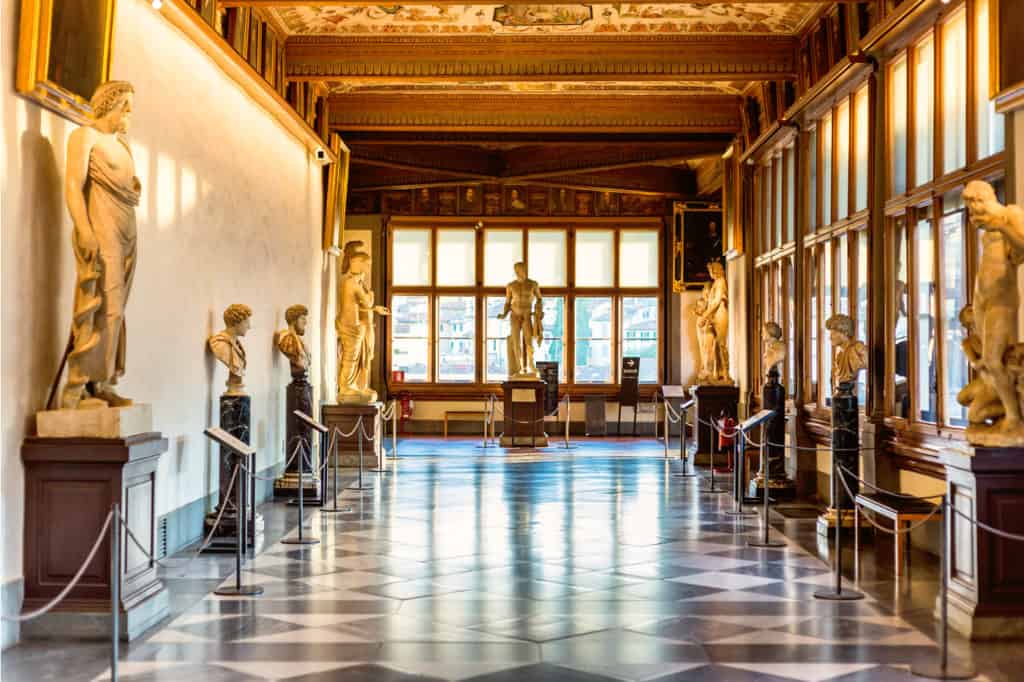
Uffizi Galleries
The Uffizi Museum contains the richest collection of Italian renaissance paintings in the world and occupy two floors of the Palazzo degli Uffizi. Designed in 1560 by Giorgio Vasari, these spaces were built to house the official offices of the Medici Grand Duke Cosimo. Given the popularity of this museum, I strongly recommend advance booking.
What are the highlights? Having visited the full museum, I can say that the quality is uniform throughout, but those with limited time should seek out the top masterworks, including the Birth of Venus and Spring by Sandro Botticelli, Michelangelo’s Holy Family known as the Doni Tondo, Piero Della Francesca’s portrait of the Duke of Montefeltro, Raphael’s Madonna of the Goldfinch, Paolo Uccello’s use of perspective in the Battle of San Romano as well as 3 paintings by Leonardo da Vinci and some great works by Caravaggio such as The Head of Medusa. Also, don’t miss the octagonally-shaped jewel box of room 18 which preserves the Medici’s family’s most precious statuary and paintings in its original state.
A single ticket entry to the Uffizi costs 20 euro and allows for admission to the National Archaeological Museum and the Opificio delle Pietre Dure Museum. The galleries are closed on Mondays.
You can reserve ahead for your ticket through GetYourGuide.
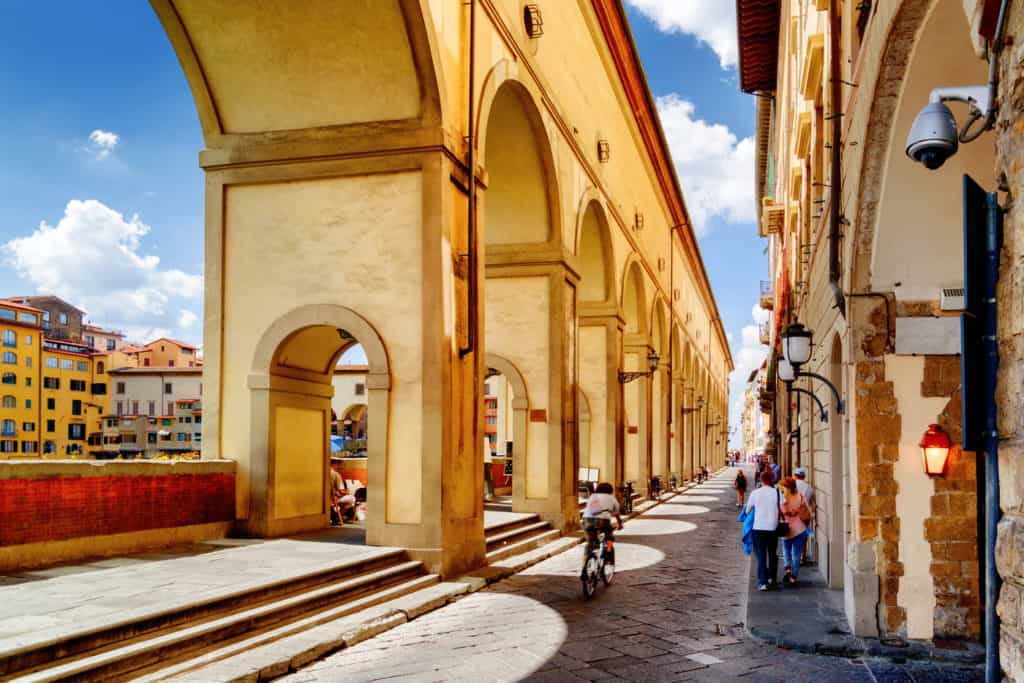
Vasari Corridor
Built by Giorgio Vasari in 1565 to connect the Palazzo Vecchio to the Pitti Palace, this 1-kilometer-long covered passageway allowed the Medici to pass unseen between their palaces, overlook the Ponte Vecchio as they crossed the Arno, and even stop to see a mass in the Church of Santa Felicità. Closed for renovations, the corridor is scheduled to reopen in 2022 for reserved tours, and will display statuary, frescoes and two memorials to bombings in Florence, one in the second World War and the other in 1993 when a car bomb destroyed part of the corridor.
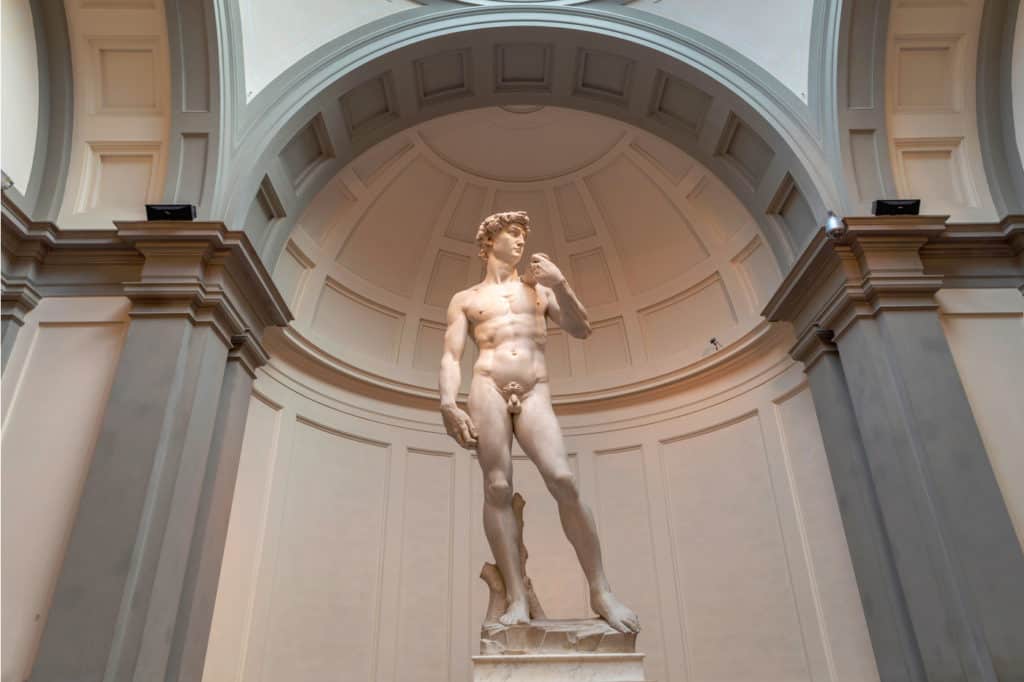
Accademia
The star attraction at the Accademia is the superlative statue of David by Michelangelo, hewn from a single block of marble. This stellar sight alone packs the gallery and so I recommend advance booking to avoid the long lines. This is not the only work by Michelangelo here. There are also four of his prisoner statues originally intended for the tomb of pope Julius II, struggling to break free of the marble encasing them, and a St. Matthew. There are other worthy paintings, and yet these are overshadowed here by David.
A full ticket admission rate is 12 euro. The galleries are closed on Mondays. You may want to consider a walking tour that includes seeing the David.
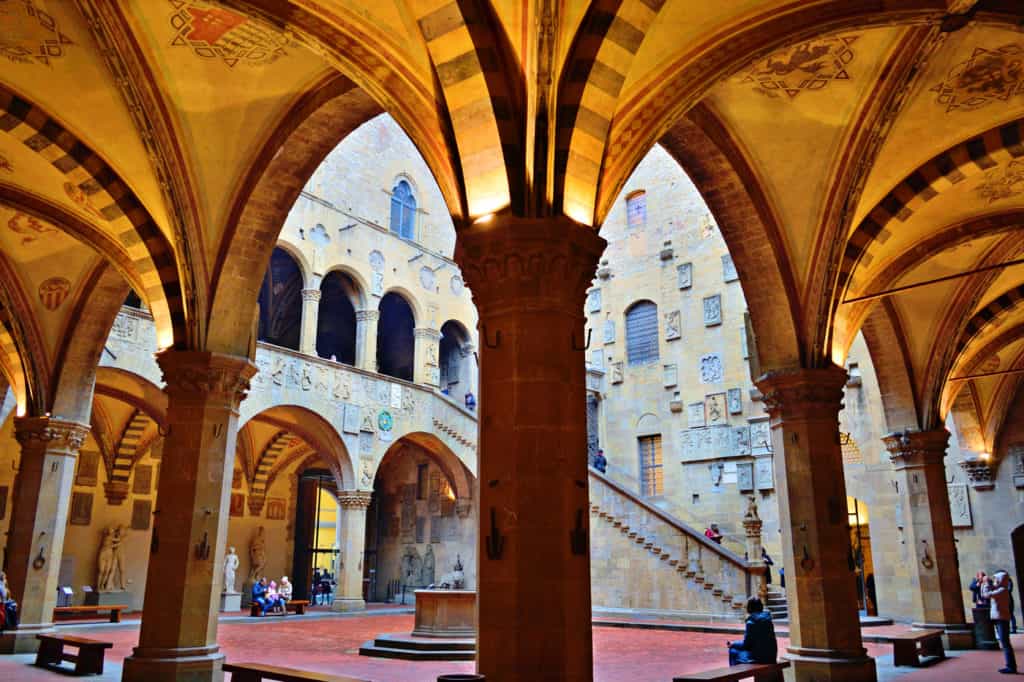
Bargello
The focus turns to sculpture in the Bargello, whose stark quarters used to be the offices of the city’s governing magistrate and later a prison. Now it contains the greatest collection of Renaissance sculpture, and it does not get as crowded as the Uffizi and Accademia.
Here you can enjoy some of Donatello’s best work, including two different renditions of David, the slayer of Goliath, his statue of St. George that once graced the Orsanmichele church, plus terracotta masterpieces by the Della Robbia family and additional work by Michelangelo. Also look for the bronze bas-reliefs created by Brunelleschi and Ghiberti as entries for the contest to design the Baptistry doors.
The ticket for entry costs 10 euro. If you’d like a private tour through the Bargello, you can get one through GetYourGuide.
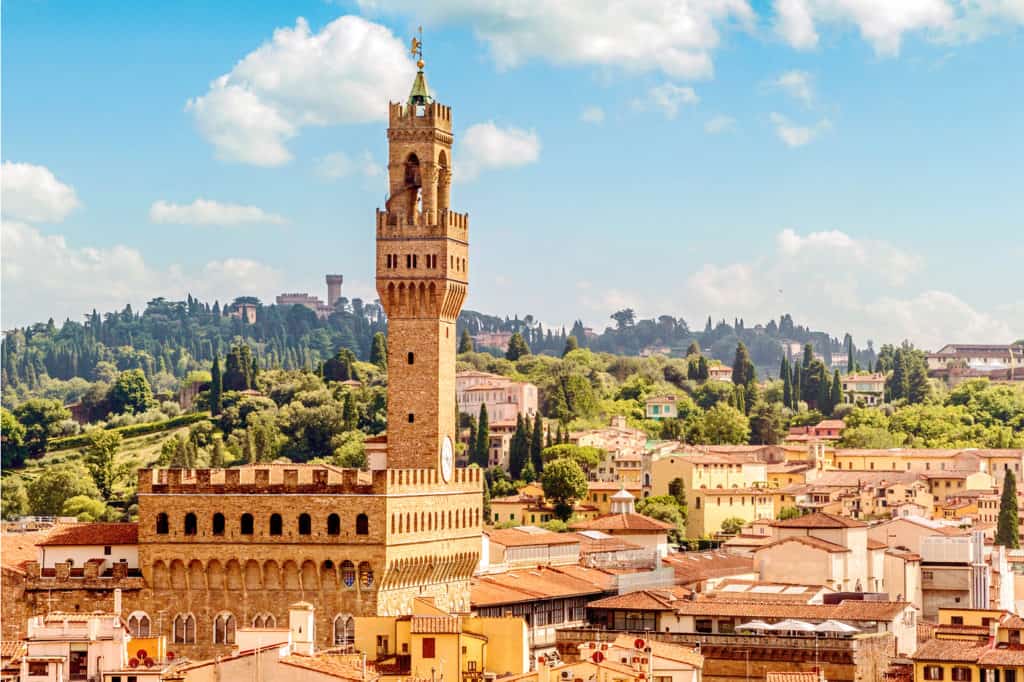
Palazzo Vecchio
This striking building takes center stage in the Piazza della Signoria. The Palazzo Vecchio has been Florence’s town hall since the days when the Medicis ruled. The tower built by Arnolfo di Cambio pierces the sky and can be climbed for great overlooks of the city.
I am struck every time I visit by the beauty of the piazza with its many statues and its rich history. Here is a replica of the famous David statue, along with a bulky Neptune by the sculptor Ammanati. In the Loggia dei Lanzi where Swiss Guard stood watch, there is an open air statuary display with such renowned art as Giambologna’s Rape of the Sabine Women and Cellini’s Perseus.
Inside there are magnificent public spaces such as the Salon of the 500 (named for the city’s Great Council members) with frescoes by Vasari and Michangelo’s Victory statue, and the richly decorated royal state apartments.
The ticket price is 12.50 euro. You can purchase a skip the line ticket online in advance.
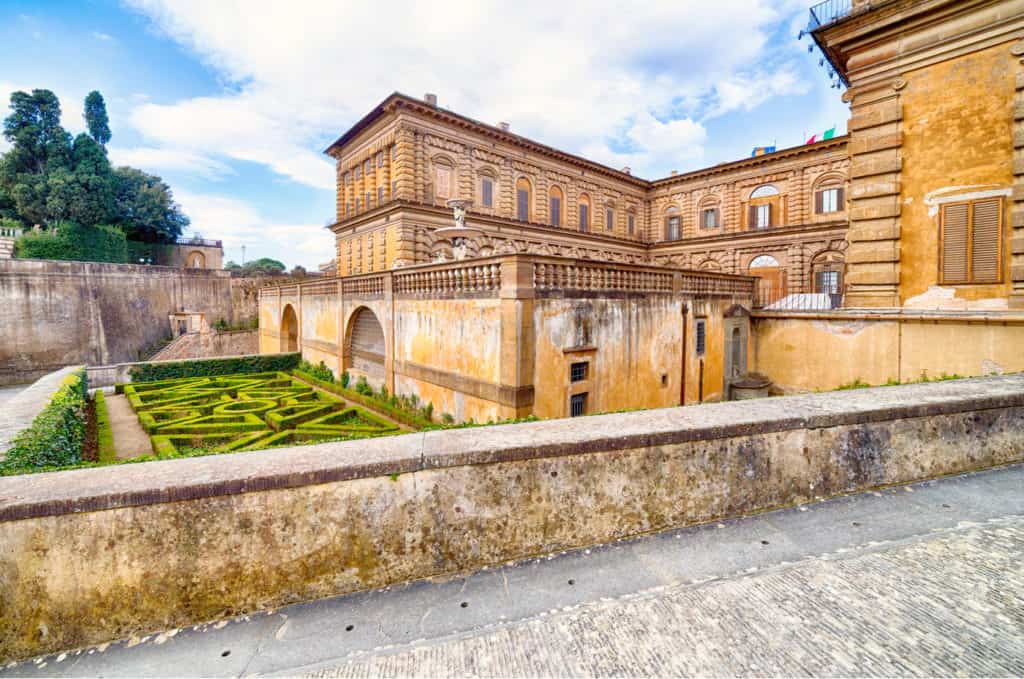
Pitti Palace
Across the Arno River and a pleasant walk up through the Oltrarno district with its artisan shops, you’ll reach the imposing Pitti Palace, another Medici residence. This sprawling complex houses several different museums, and the graceful sweep of the Boboli Gardens lie behind the palace budlings on the hillside.
For me, the best reason to come is the rich collection of paintings in the Palatine Gallery.
Here you’ll find masterworks by Raphael, Titian, Botticelli, Caravaggio and Rubens, though the original method of hanging paintings one above another, floor to ceiling can be a bit taxing to study the works and identify them easily. There are also royal apartments that can be toured, and a modern art gallery with members of the Italian Impressionist-like Macchiaioli school on display. Other more specialized museums contain costumes, silver, jewelry and porcelain.
A single ticket entry to all Pitti Palace museums is 16 euro. Note that the palace is closed on Mondays. Get an advance ticket on GetYourGuide.
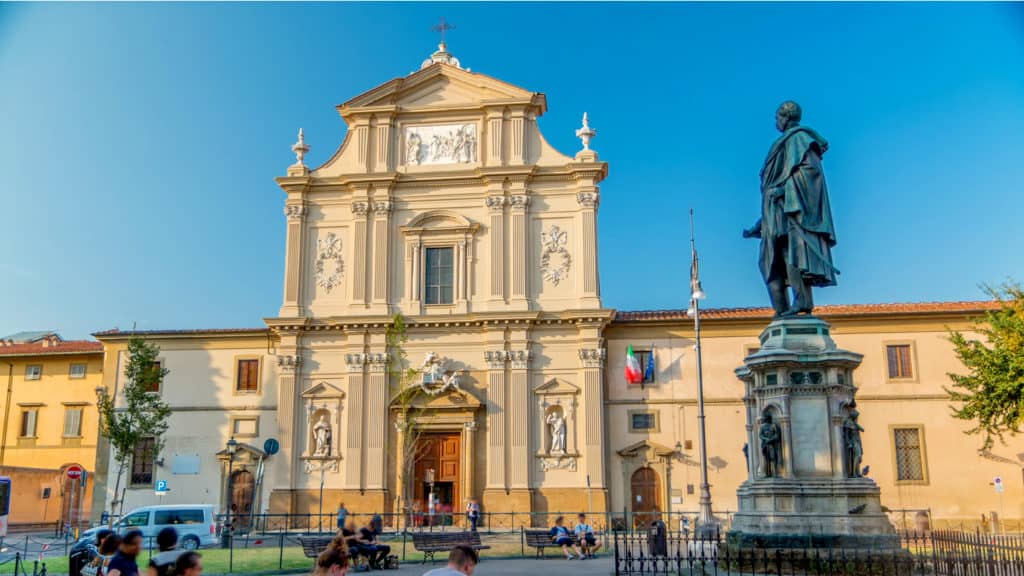
San Marco Museum
What I enjoy most about the San Marco Museum is being able to see the paintings of Fra Angelico in their proper surroundings, the monastery of San Marco where he lived and worked in the mid 1400s. You’ll see his work throughout the complex, from his famous Annuciation at the top of the stairs leading up from the first floor to decorations of individual monks’ cells to a Last Judgement altarpiece in the Pilgrim’s Hospice.
An admission ticket costs 8 euro. You can also get a timed entrance ticket on GetYourGuide.
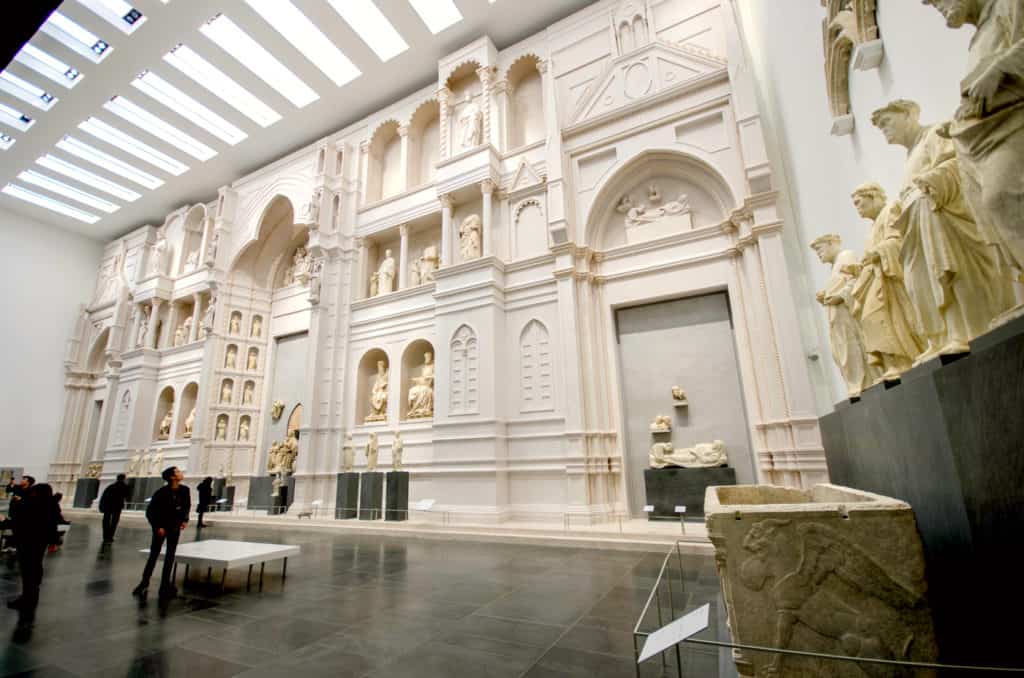
Opera del Duomo Museum
The best art from the complex of the Duomo, Baptistry and Campanile are on display in this excellent museum. Original statues have been relocated here, as well as Ghiberti’s Gates of Paradise and models of Brunelleschi’s amazing dome revealing his construction techniques for the Duomo. There are also works by Michelangelo (La Pieta), Donatello (a gaunt Mary Magdalene) and Luca Della Robbia. Entry fee information is covered under the section on the Duomo.
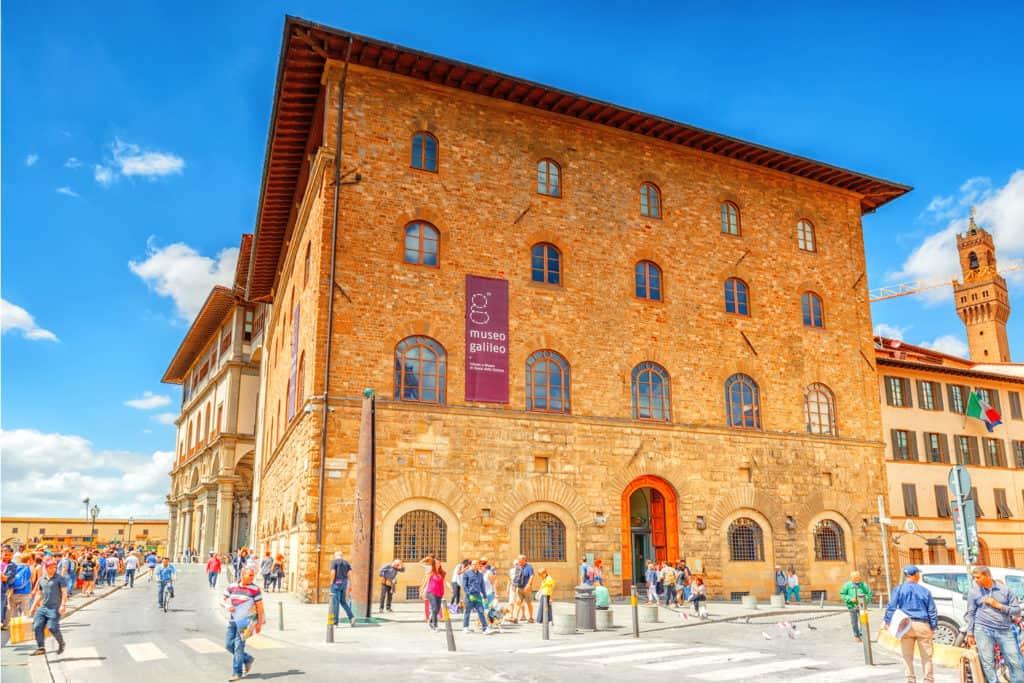
Museo Galileo
When you need a break from all the artistic exhibitions, try the Museo Galileo. This museum focuses on the scientific achievements of the Renaissance age and has some of Galileo’s own instruments. Here you’ll find some if the beautiful array of scientific treasures collected by the Medici, including telescopes, clocks, globes and watches.
An entry ticket costs 11 euro.
Florence’s Divine Churches
Florence has an unsurpassed collection of churches of architectural distinction and full of artistic treasures. Some of the greatest Renaissance talents were employed in their construction. Including Brunelleschi, Ghiberti and Giotto.
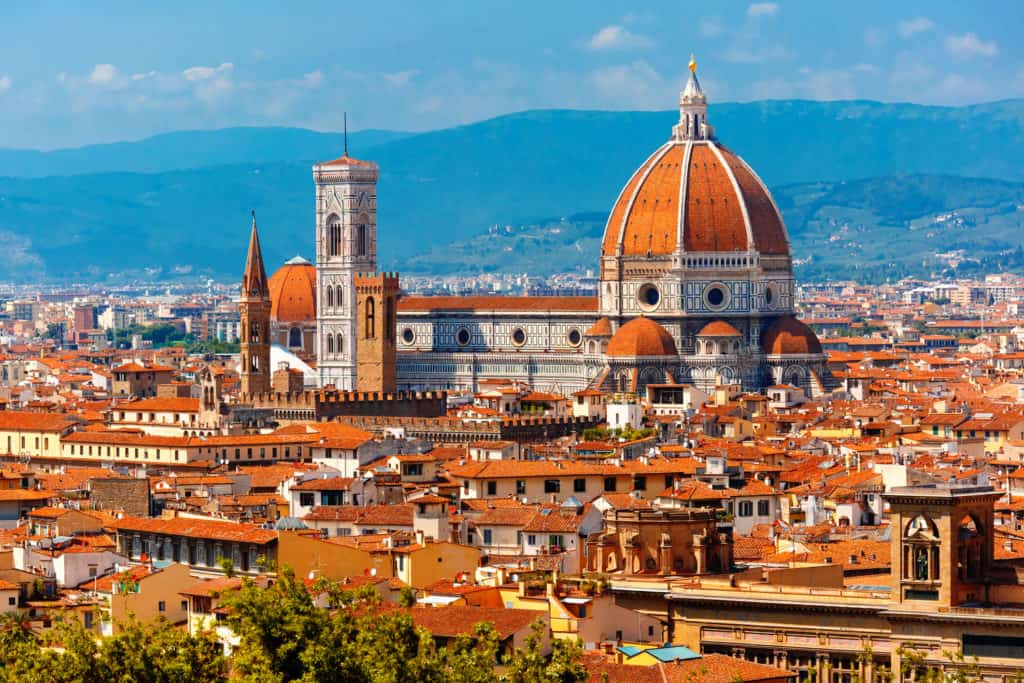
The Duomo, Baptistry, and Bell Tower
Many travelers on their first visit to the city will head towards the Piazza del Duomo with its star trio of sights, the Cathedral of Santa Maria del Fiori (or simply the Duomo), the Baptistry and Bell Tower.
The red-tiled cupola of the Duomo is the most recognizable landmark on the city’s skyline.
The dome of the Duomo is an architectural marvel, built by Brunelleschi and the first such dome built since Roman times. In fact, his inspiration was Rome’s Pantheon. The Gothic exterior is graced with green, pink and white striped marble. Inside is more reserved than you might expect, with much of the best-known art moved to the Opera del Duomo Museum.
The 463-step climb to the top of the dome yields striking views over the city and the two other landmark buildings alongside. Note that the climb is strenuous and not for those afraid of heights as the staircases were built for Duomo workmen and not for modern visitors! The climb also provides the best vantage point to see Vasari’s Last Judgement fresco painted inside the dome. I was so interested in the story behind its construction that I read and recommend the book Brunelleschi’s Dome by Ross King.
Consider a tour that includes admission for the climbing of the tower.
The octagonally-shaped Baptistry has a green and white marble exterior and contains three sets of magnificent bronze doors. The most famous by Lorenzo Ghiberti are located on the east side of the building and known as the Gates of Paradise, named by Michelangelo for their striking beauty. These spectacular works of art capture scenes from the Old Testament.
I was in awe of how Ghiberti could use the bronze medium to recreate the various scenes with people and landscapes in such realistic fashion. The original doors are in the Opera del Duomo Museum, but the copies in place show the amazing craftsmanship that went into their production. The dome’s striking mosaics from the mid 13th century are the highlight of the interior.
A ticket is 10 euro for a combination visit of the Baptistry plus the Cathedral Works Museum.
A single ticket for the Baptistry is 5 euro.
The campanile or Bell Tower of Giotto can be climbed (414 steps) for the best overall views of the Duomo, which can be difficult to study and photograph within the close confines of the piazza. It catches the eye with its multi-colored marble. The statues that once adorned the structure are now protected in the Opera del Duomo Museum.
The ticket price is 15 euro.
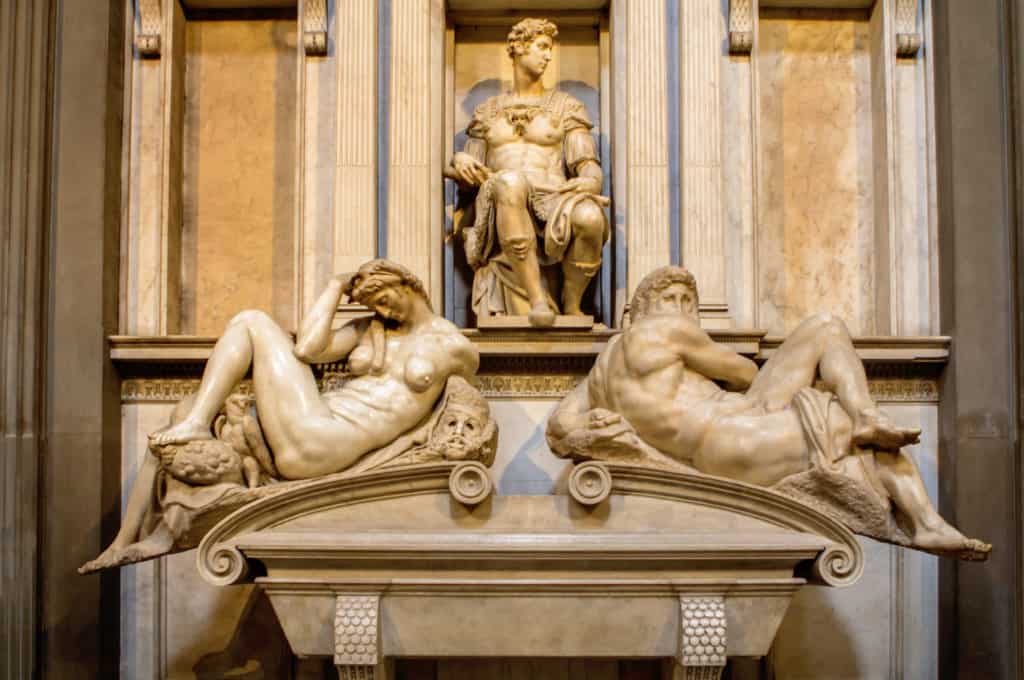
San Lorenzo
As a fan of Michelangelo’s sculptural work, I revel in the opportunities to see the master’s work in Florence’s churches and museums. In San Lorenzo, I recommend visiting the Medici Chapels, where he created incredible funerary statuary to embellish the Medici tombs. These consist of allegorical figures representing Dawn and Dusk on one tomb and Night and Day on another. An innovator on many fronts, Michelangelo also designed the sweeping staircase of the nearby Laurentian Library, built to house the Medici’s extensive book collection.
The Medici Chapels are open every day except Tuesday, and a regular admission ticket costs 9 euro. Reserve your entry ticket through GetYourGuide.
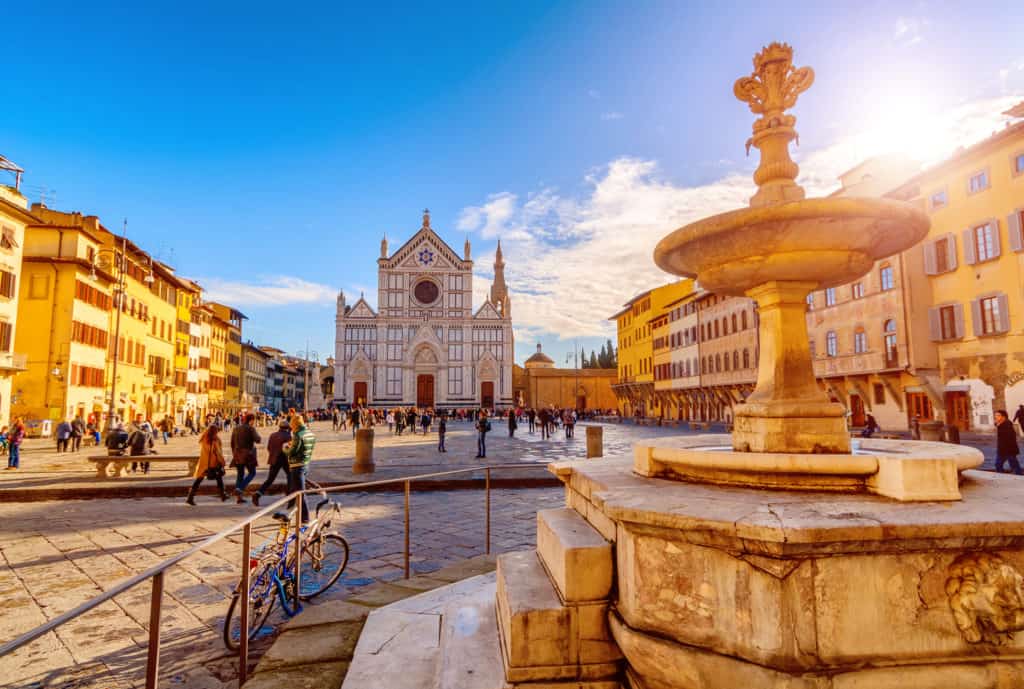
Santa Croce
Pay your respects to many of the most illustrious figures of the Renaissance by visiting Santa Croce. Admire the green and white striped marble façade, then enter to see the tombs and monuments honoring such luminaries as Michelangelo and Machiavelli.
Be sure to look for the frescoes by Giotto and his pupil Taddeo Gaddi in the Peruzzi and Bardi chapels, and the Pazzi Chapel, which is an architectural masterpiece by Brunelleschi. In the refectory where the Franciscan monks shared their meals, be sure to see Vasari’s Last Supper fresco from 1546. What struck me is that this oil painting was under restoration for over 50 years following severe water damage from Florence’s massive flood in 1966!
An entry ticket costs 9 euro. Consider a tour of the church to fully appreciate the artistic treasures within.
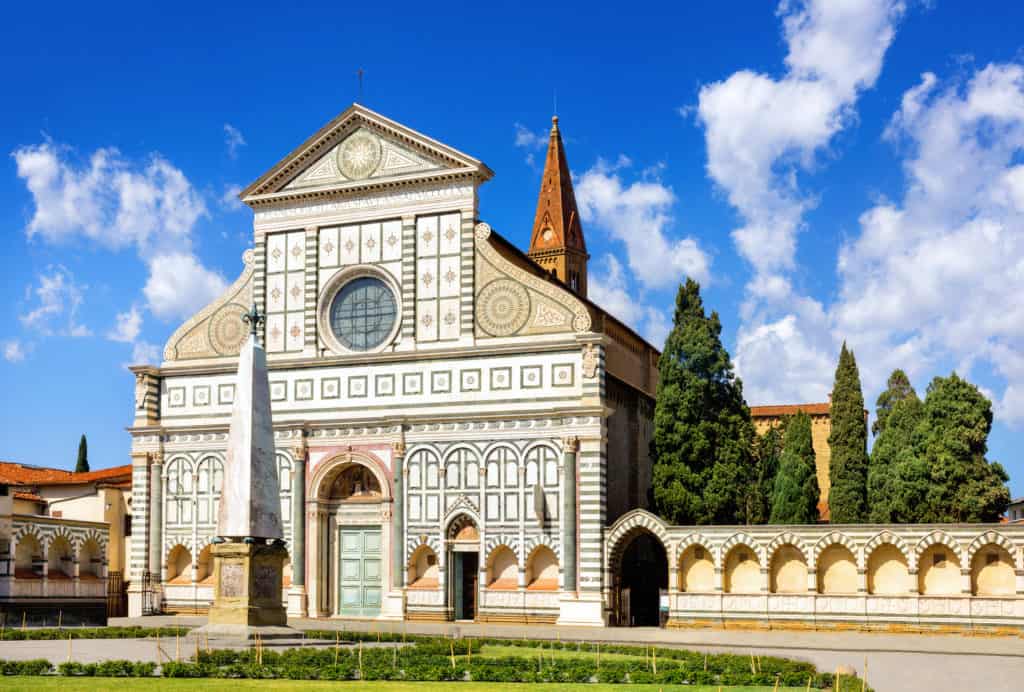
Santa Maria Novella
The church of Santa Maria Novella graces its namesake piazza near Florence’s train station. The church is a must-see for its tremendous collection of artistic treasures. In addition to its stained-glass windows, look for the frescoes by Fillipino Lippi in the Strozzi Chapel to the right of the altar and Brunelleschi’s wood crucifix from around 1410 in the Gondi Chapel. It is said that the great sculptor Donatello, upon viewing the crucifix, dropped a basket of eggs in stunned disbelief!
More striking frescoes decorate the main altar area, these by Domenico Ghirlandaio, master of Michelangelo. These are known for their depiction of Florentine life during the Renaissance. Walk through the peaceful Green Cloister to visit the Spanish Chapel, with more extraordinary frescoes pained by Andrea di Bonaiuto in 1365-67.
The price of an entry ticket is 7.50 euro.
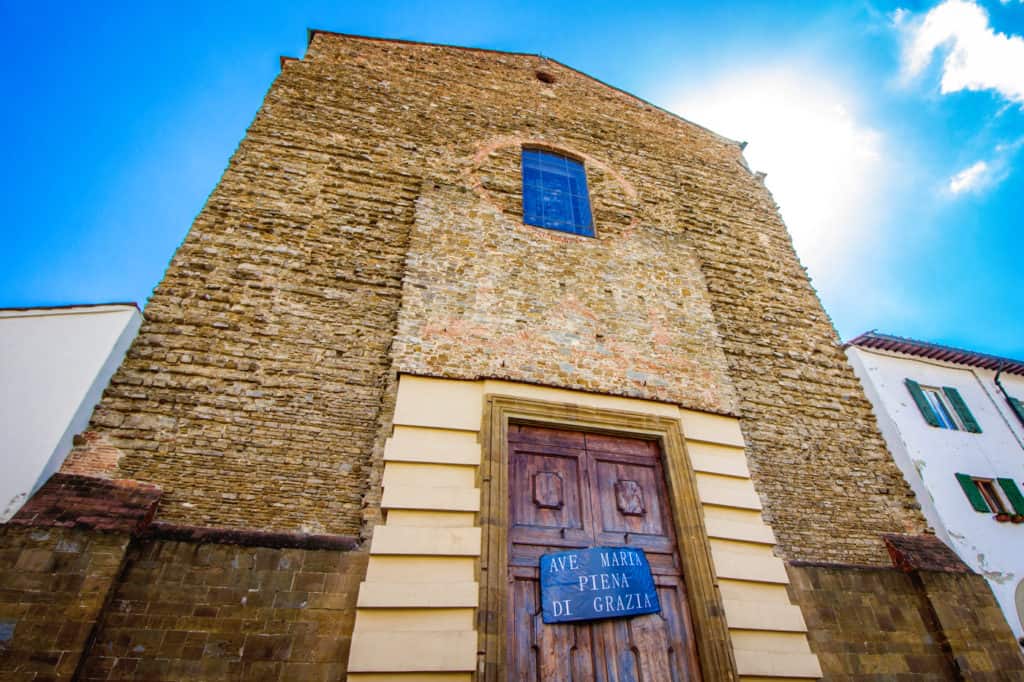
Santa Maria del Carmine
Lovers of early Renaissance art won’t want to miss a visit to the Brancacci Chapel in Santa Maria del Carmine. This church is located on the opposite bank of the Arno from the heart of the city in the picturesque San Frediano district. The famous frescoes here were painted by Masaccio and Masolino and finished years later by Fillipino Lippi.
The most famous Masaccio panels are the Expulsion of Adam and Eve from Paradise, and the Tribute Money, both on the chapel’s left side. My advice is to rent the audio guide, which provides a great explanation of the artists, what the art is conveying and the importance of these works in art history.
Note that the church is closed on Tuesdays, and the price of entry is 8 euro.
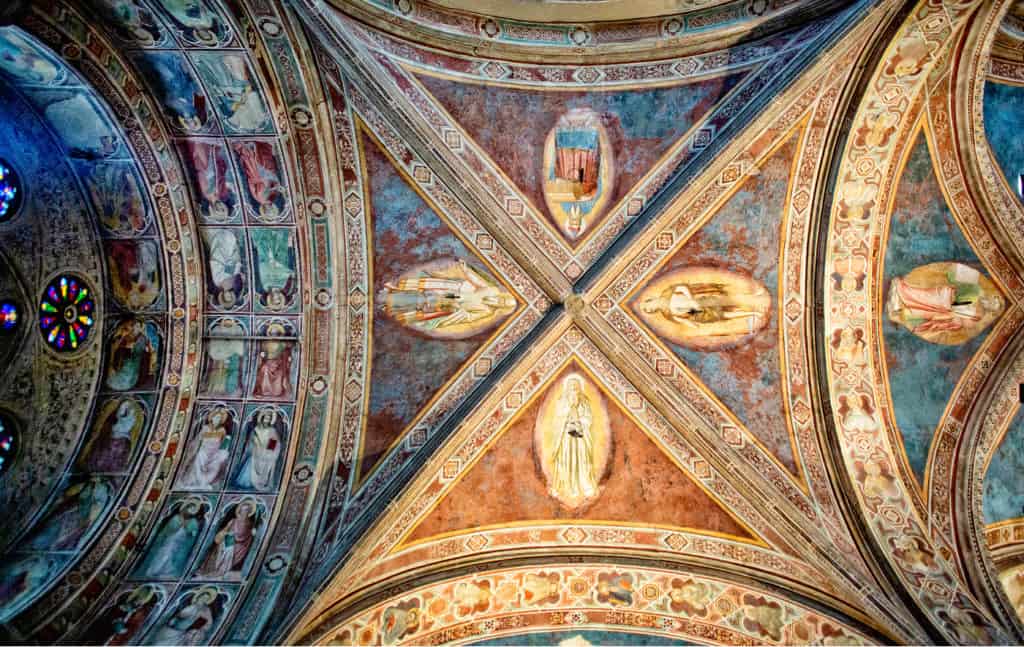
Orsanmichele
The interesting Orsanmichele church is uniquely structured, since it served as an open-air loggia for selling grain prior to becoming a church. The exterior statues by such artists as Verrocchio and Donatello are copies, with the originals inside the museum on the upper floor.
The highlight inside is a 14th century Gothic tabernacle by Andrea Orcagna. The church has limited opening hours, on Tuesday mornings and Saturday afternoons, so plan carefully if you want to add this to your itinerary!
The price of an entry ticket is 2 euro.
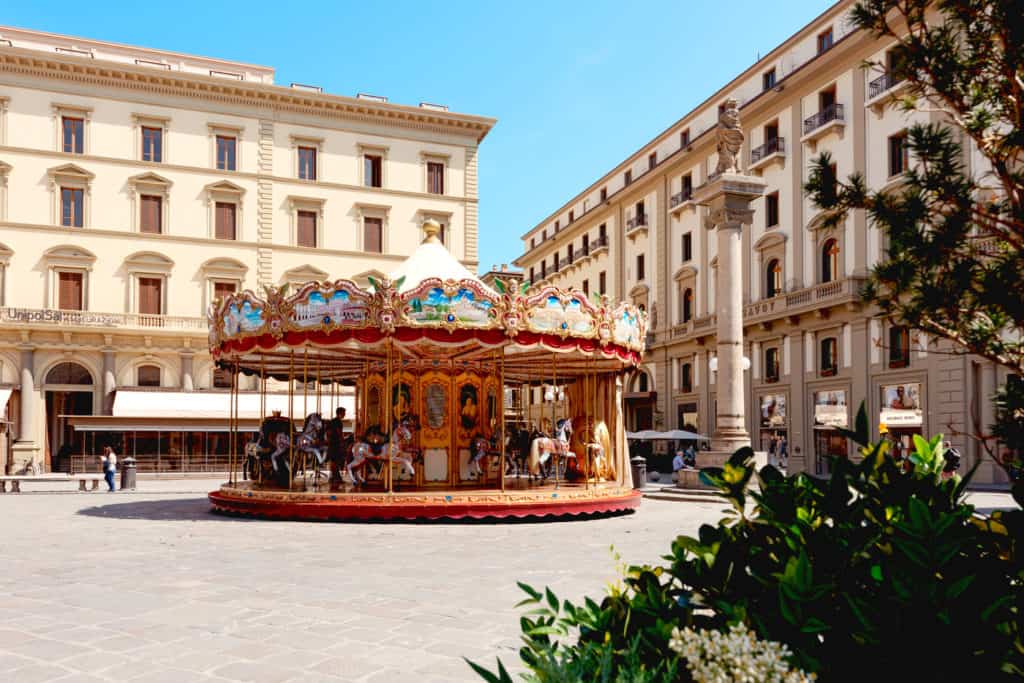
The Magnificent Piazzas
Public life in Florence is on display in its great squares or piazzas in Italian. Piazza dell Signoria is for me the most striking and historic. Here the dramatic tower of the Palazzo Vecchio pierces the sky. Bold statuary includes the white Neptune fountain by Ammanati and a copy of Michelangelo’s David. In the Loggia dei Lanzi, there are a small collection of noteworthy sculptures, namely Giambologna’s Rape of the Sabine Women and Cellini’s bronze Perseus holding the head of Medusa.
It was in this square in 1497 that the hell and brimstone friar Savonarola preached against earthly possessions and a Bonfire of the Vanities was held during which even the famous painter Botticelli added some of his artwork to the fire. There is a plaque in the pavement where Savonarola met his own end by hanging.
Piazza della Repubblica brings out the locals as well as the tourists. It is a place full of life, with several famous cafes and a merry go round for the children. I have had dessert and hot chocolate several times at Paszkowski outdoors, and heartily recommend it.
Architectural Treasures: the Palazzi
The architectural marvels of the stone palazzi of the Renaissance nobility have come down through the ages as beautiful reminders of the magnificent builders of the age. Some are now museums which allow you to admire their interiors, while others must be appreciated from the streets.
My favorite is the former home of the Medici, the Palazzo Medici-Riccardi, which contains one of the most brilliant frescoes you will ever see by Benozzo Gozzoli in the Magi Chapel.
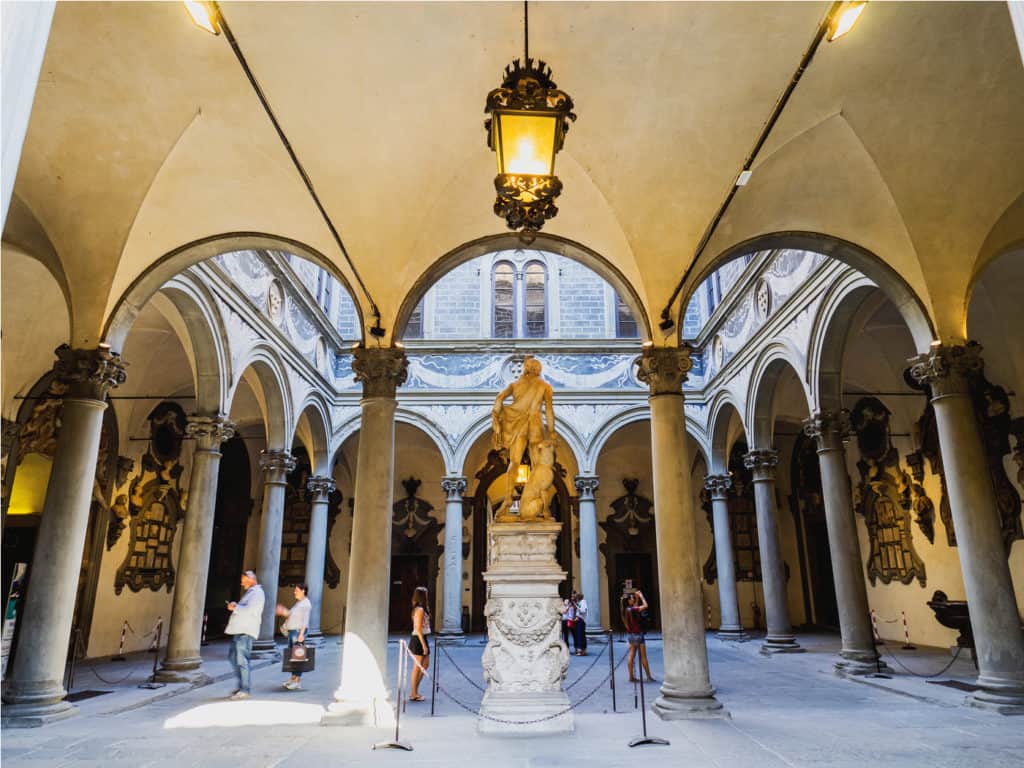
Palazzo Medici-Riccardi
This home of the Medici is worth a stop to see one of the most impressive secular frescoes you’ll ever see, Benozzo Gozzoli’s Procession of the Magi from the early 1460s. The colors burst from the walls, and you are enveloped in the characters and scenery Gozzoli has captured. Gozzoli pictures his Medici patrons in the setting of a procession of the Magi to Bethlehem.
The palazzo is open daily except Wednesday, and the ticket price is 7 euro. You can get a tour of the palace to get the full history of the remarkable building and fresco.
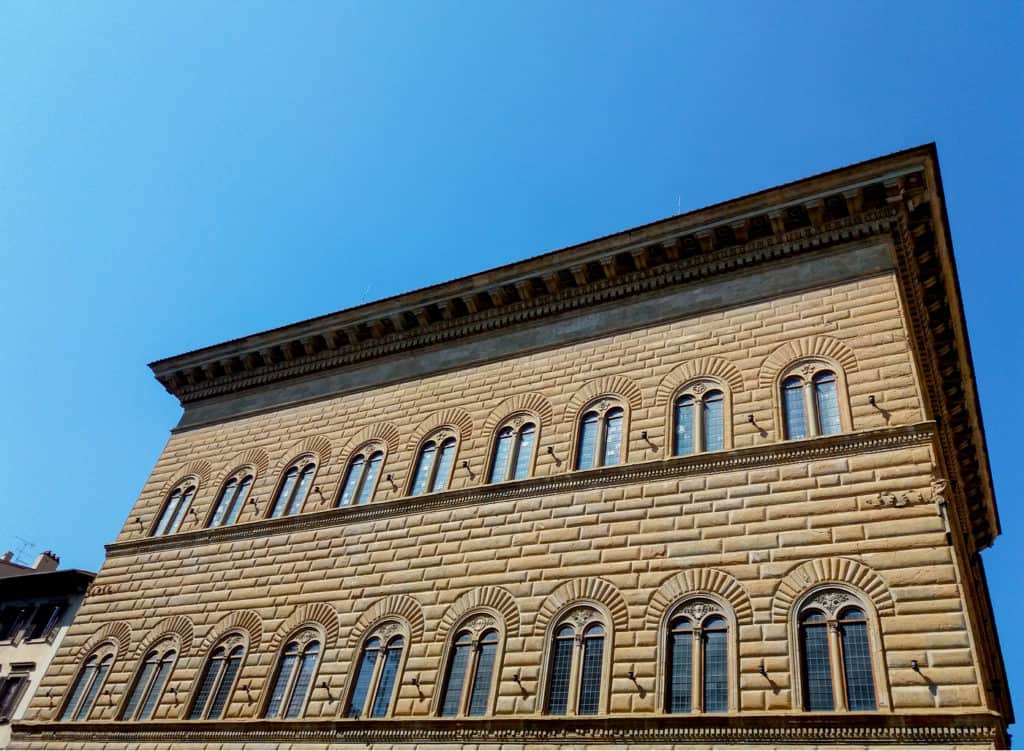
Palazzo Strozzi
The Strozzi family tried to outcompete the Medici in building their massive Palazzo Strozzi, which now houses special blockbuster art exhibitions. It’s interesting to see what a Renaissance family of great wealth could build as their testament. Be sure to check out the interior courtyard. Tickets cost 15 euro.
Garden Delights
The city has several historic gardens that offer a respite from the city center and offer delightful panoramic perspectives of the city. The best of these for me are the Boboli Gardens, which are positioned behind the Pitti Palace.
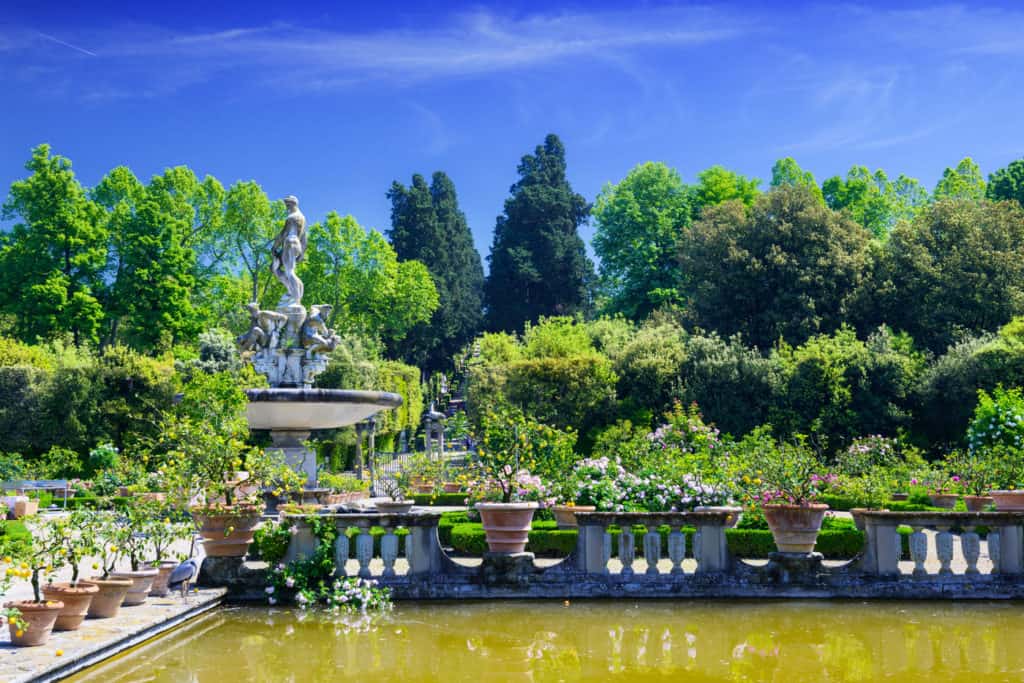
Boboli Gardens
When you’ve had your fill of museums and churches, escape outside for a delightful stroll through the Boboli Gardens. Situated behind the Pitti Place on the opposite bank of the Arno from the city center, the Gardens provide a green respite. The gardens are extensive and are built over a hillside, so be prepared to walk! But the grounds are delightful, with statuary, fountains, a small museum of porcelain and the odd yet intriguing Grotto of Buontalenti at one end of the garden. And the views over the city are superlative!
A ticket to the Boboli Gardens costs 10 euro, and also allows access to the Gardens of the Villa Bardini. You could also get a skip the line ticket and tour.
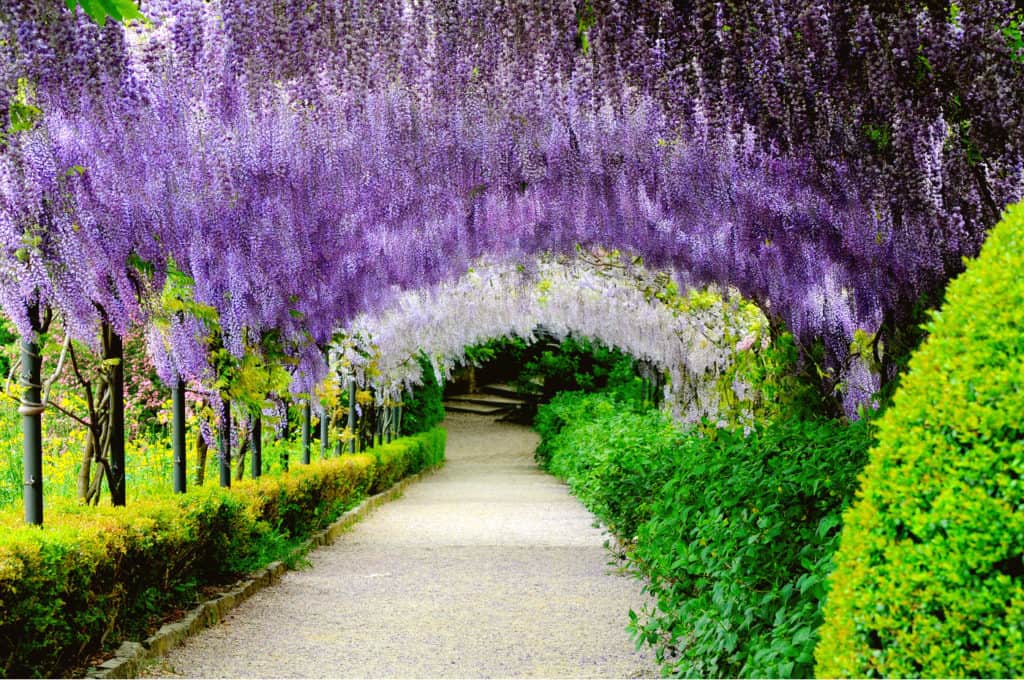
Bardini Gardens
This charming garden lies not far from the Ponte Vecchio, and also offers great views over the city. The scope of the gardens is much more manageable than the Boboli Gardens, but it still offers a variety of styles. Climb the grand central staircase and admire the flowers, sculptures and fountains.
The 10-euro ticket gains you entrance to both the Bardini and Boboli Gardens.
Best Viewpoints
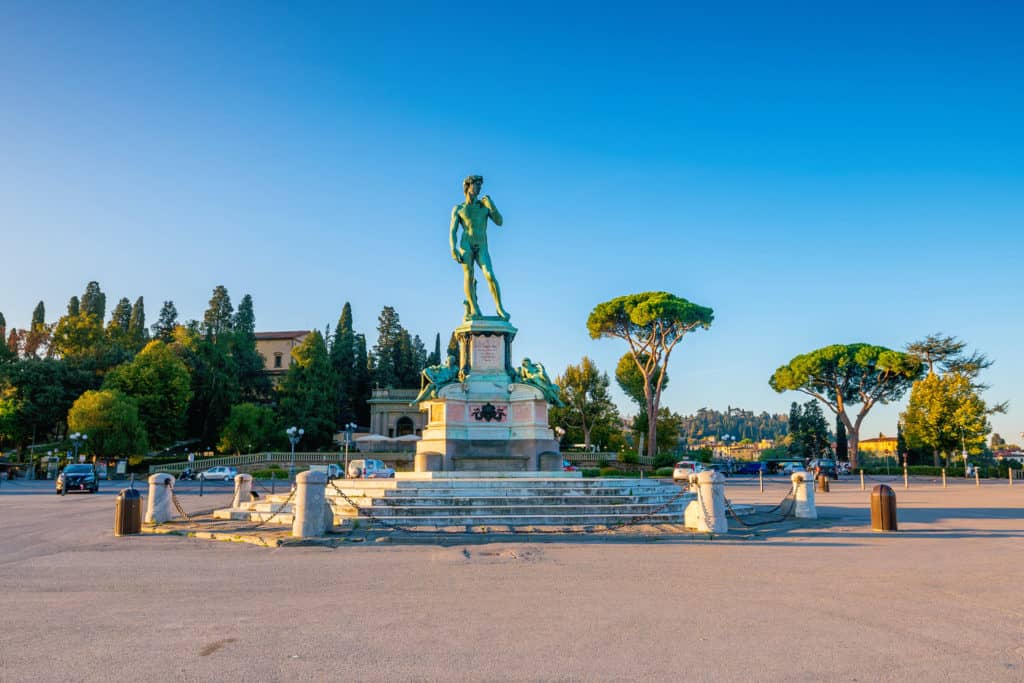
Piazzale Michelangelo
To enjoy the most iconic view of the city, visit Piazzale Michelangelo. During the day, have lunch at one of the restaurants near the square and drink in the sweeping views of Florence. I like to return at night for the magical scene of the Duomo and other churches and buildings lit up at night. A copy of Michelangelo’s David sits in the middle of the square.
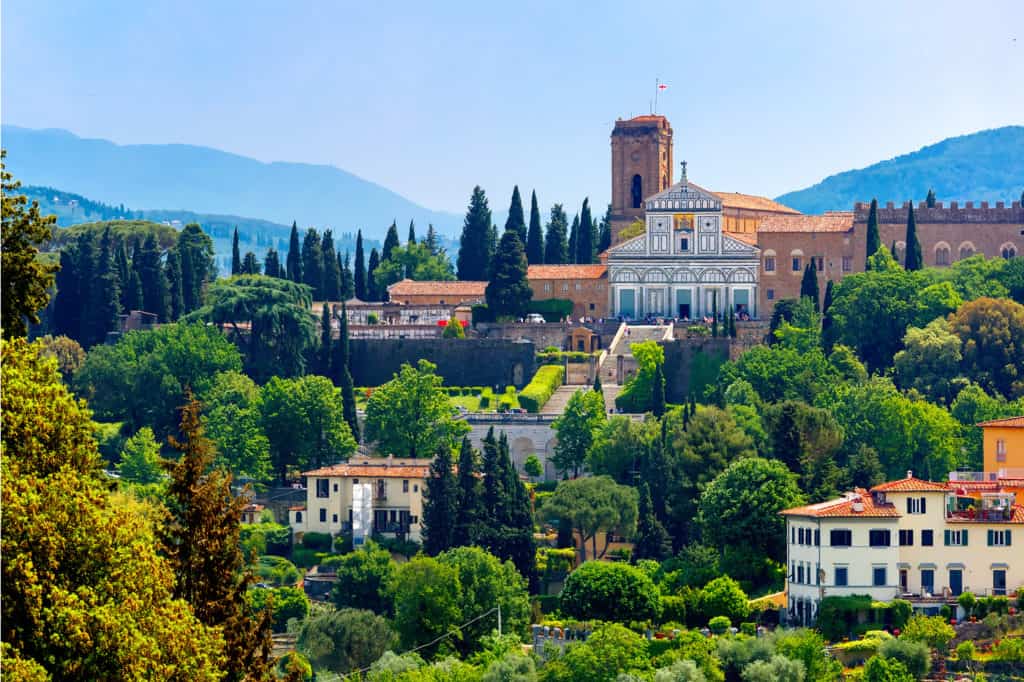
San Miniato al Monte
The church of San Miniato al Monte requires a bit of an effort to get to, sitting on a hillside above the Piazzale Michelangelo. But the views over the city are marvelous and reward the climb to get there! This is one of the oldest churches in the city, and well worth a look around to see its mosaics and frescoes and its beautiful ceiling by Luca della Robbia. And if you time your visit for 5:45 p.m., the monks do Gregorian chanting every day!
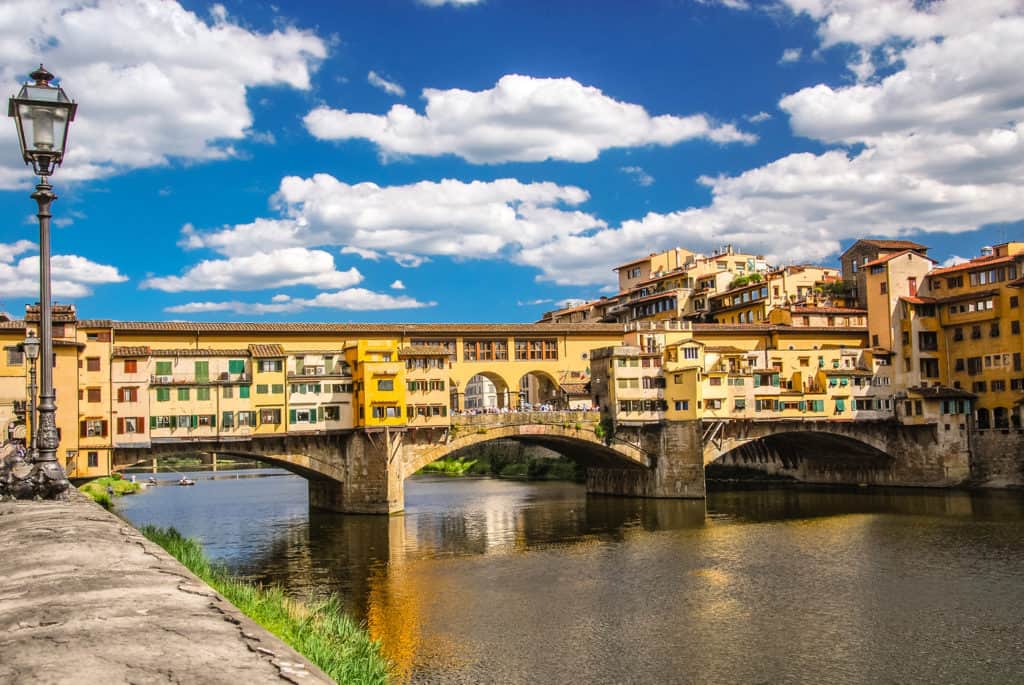
Ponte Vecchio
This beautiful bridge spans the Arno and is full of gold and silversmith shops. It was built in 1345 and its beauty was spared during the German bombing of the city in 1944. The views up and down the Arno of the city are tremendous. The Medici threw out the butchers and grocers who used to sell their wares on the bridge due to the smell and brought in the jewelers! The previously mentioned Vasari corridor runs over top of the merchants’ shops en route to the Uffizi or Pitti Palace.
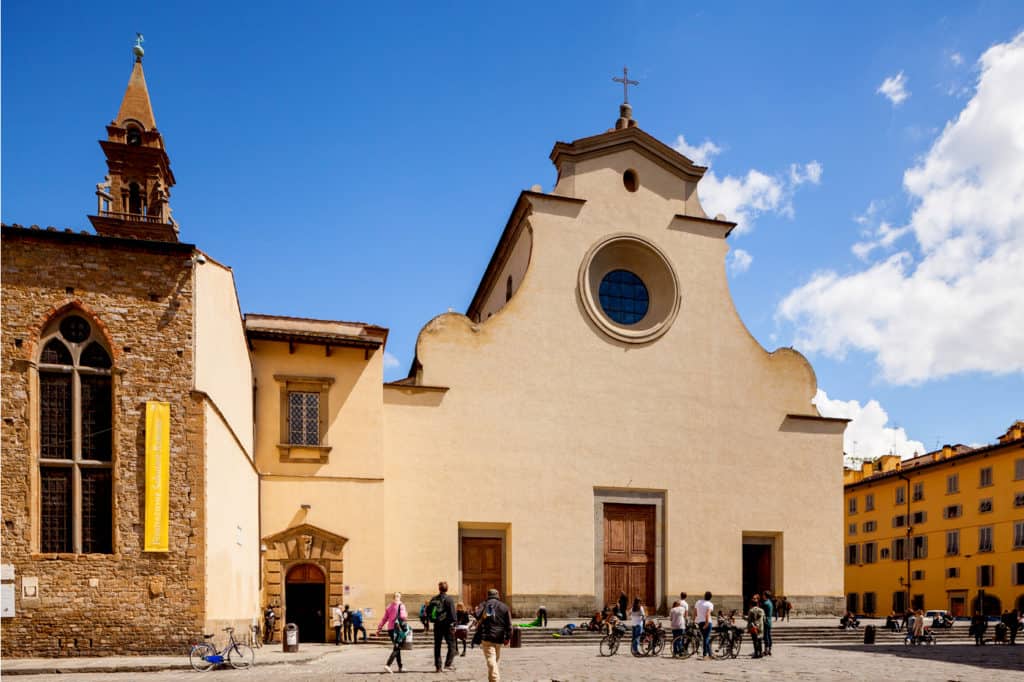
Artisan Workshops
One of the special opportunities to dig back into Florence’s past is to visit the artisan workshops, many in the Oltrano district, where master tradesmen continue on with the historic work of their predecessors.
On the Ponte Vecchio, you will find shop after shop of gold and jewels. A bust of the most Famous Florentine goldsmith, Benvenuto Cellini, rests in the middle of the bridge, where open space attracts those who want to drink in the beautiful views from the middle of the Arno of the golden hued stone palazzi lining its banks.
I visited the Il Papiro shop near the Pitti Palace and was treated to an impromptu demonstration of how the shop creates its brilliantly colored marbled paper. The process uses twelve colors, and no two papers are alike. Here you will find a greats election of gift items such as writing paper, cards, stationery and books with the unique Florentine stamp.
A tour can give a broader view of the various types of craft shops you can see in the Oltrarno district.
Markets of Florence
Any visit to Florence should include visiting its markets for the opportunity to see the local produce and crafts.
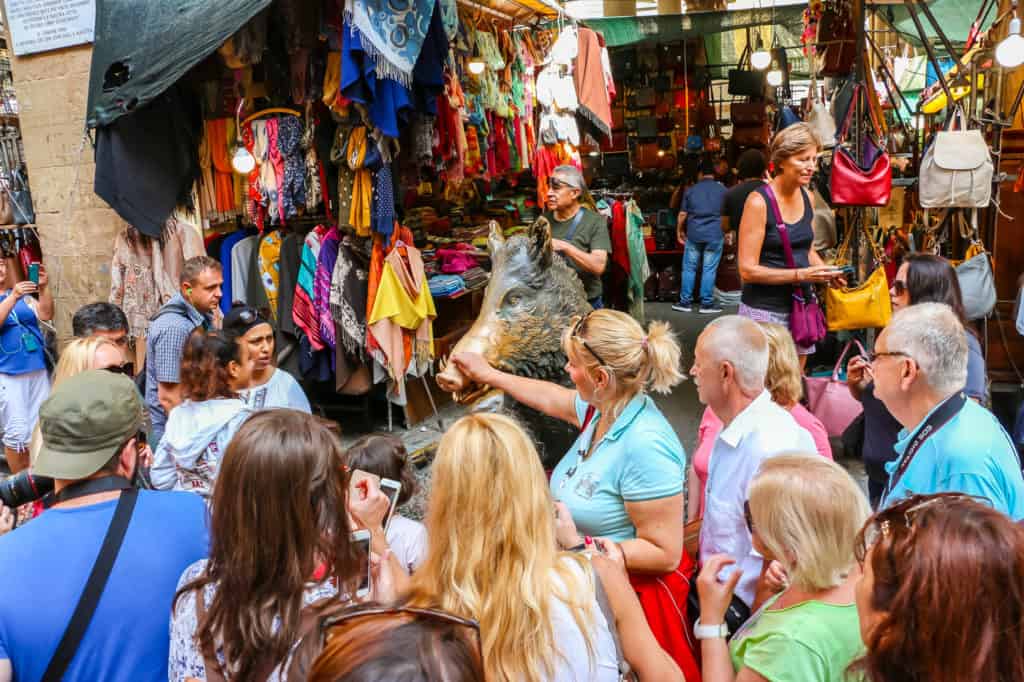
Mercato Nuovo
Although the leather goods here may not be first quality, a visit here to the so-called New Market is fun to see the bronze statue known as Il Porcellino, a wild boar. The story goes that rubbing the nose of the boar ensures your return to Florence!
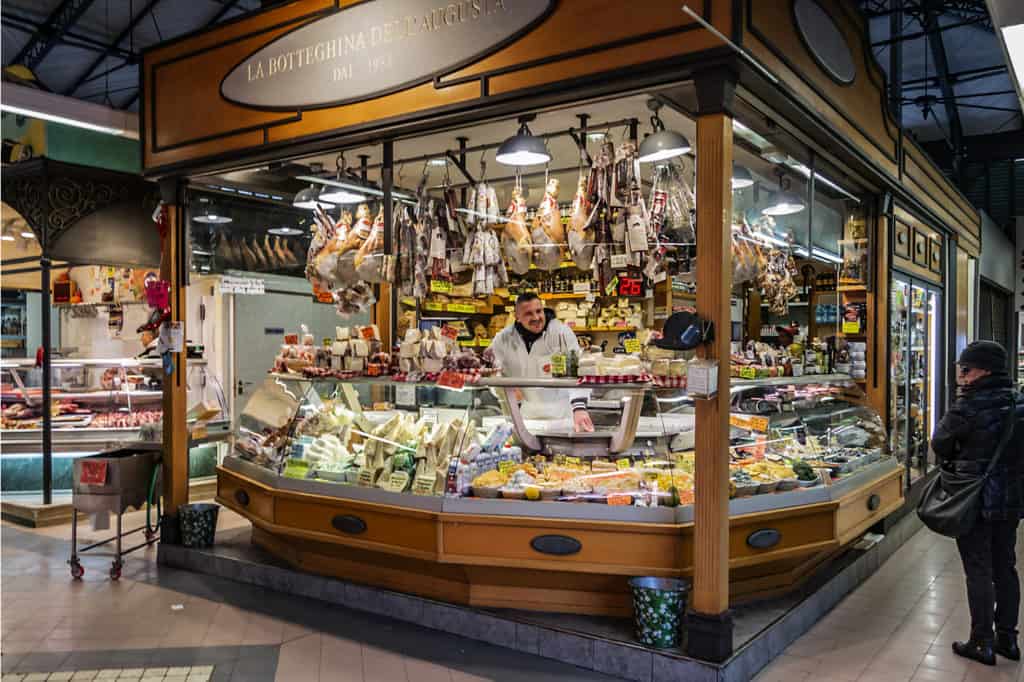
Mercato Sant’ Ambrogio
Wander through the market to check out the piles of fresh produce, meats, fish, cheese, bread and pasta. Learn what is in season and what you might find on the tables of the local restaurants. Get there early as all the action happens in the morning, and the market shuts down by early afternoon.
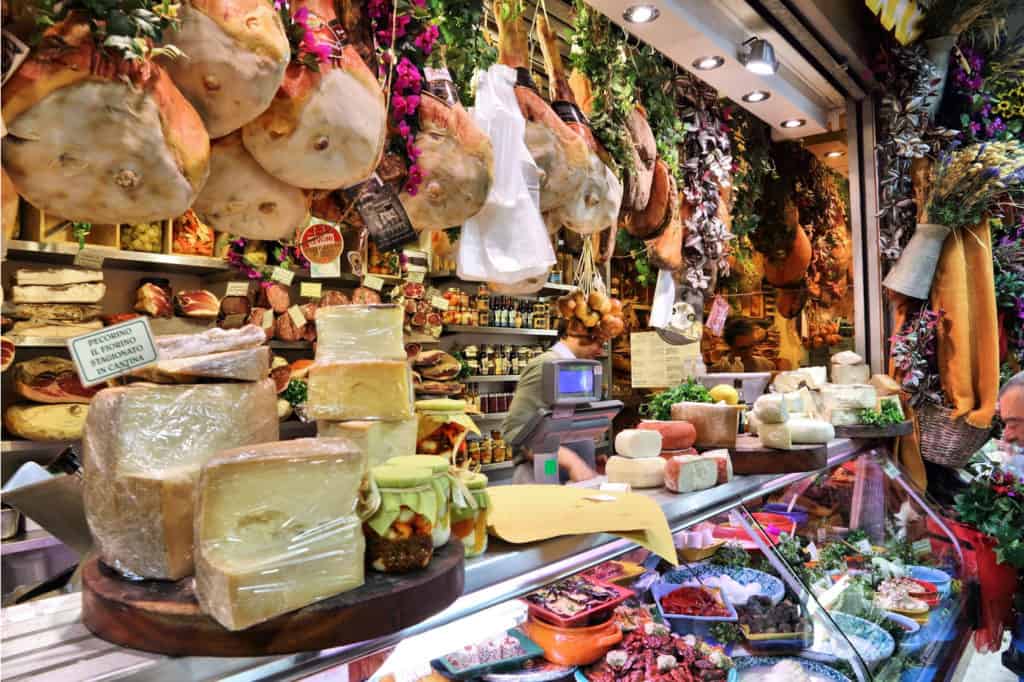
Mercato Centrale
In this large, two story market hall, you’ll find meat and cheese stalls on the ground floor and a more modern food court on the second level. The iron and glass market building was constructed in 1874.
To really get a local’s perspective, there are tours that take you on a private food walking tour or a tour of the Central Market
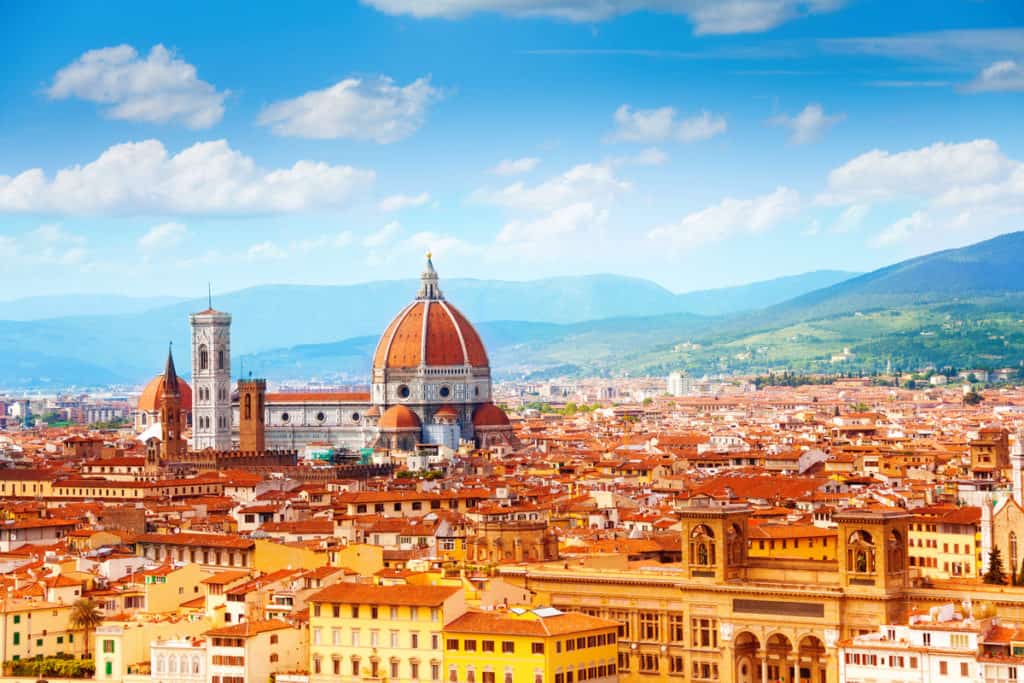
Conclusion
Florence is a feast for the senses. It rewards not only the first-time visitor but the lucky traveler who is able to return again and again, digging a little more beneath the surface each visit. For those with an interest in Italian art, culture and history, it provides a source of inspiration and delight for a lifetime of study.
Related Articles on Italy
🇮🇹 Top Things to Do in Milan
🏛 23 Things to Do in Rome, Italy
💰 The Cost of Travel in Rome: A 2023 Budget Breakdown
🚤 53 Best Things to Do in Venice
🛬 How to Make the Most of a Layover in Venice
🍹 21 Incredible Things to Do in Bologna, Italy
🍝 23 Magical Things to Do in Siena, Italy
🍷 16 Amazing Things to Do in Lucca, Italy
🎉 Liberazione: What to Expect From Italy’s Liberation Day

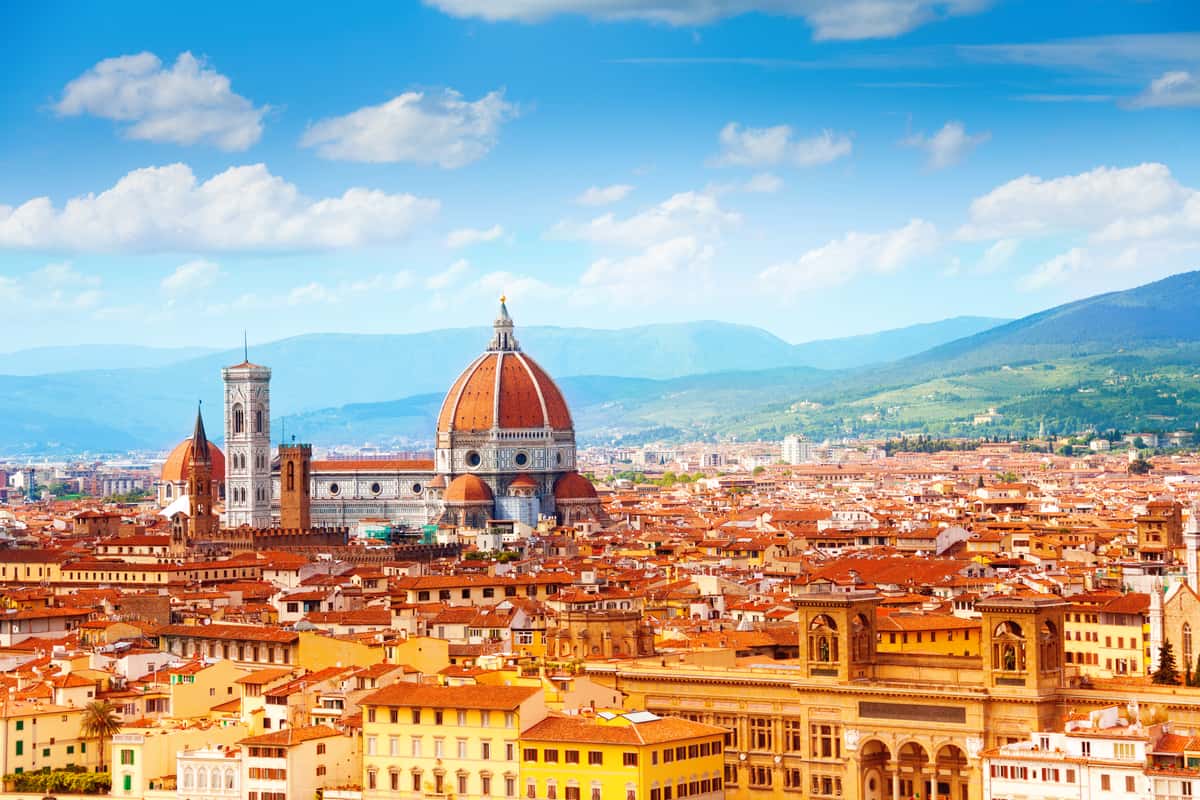


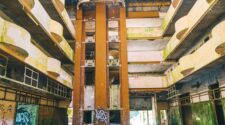
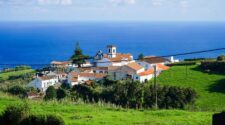
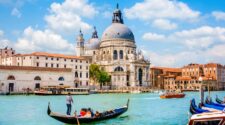

No Comment